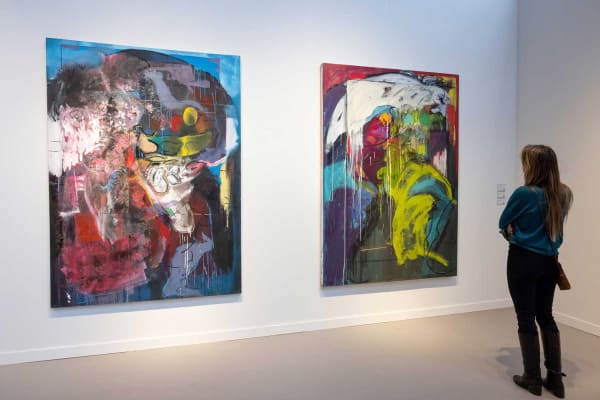Mary Lovelace O'Neal
Mary Lovelace O’Neal (b. 1942, Jackson, MS) is known for her paintings that pair bold, monumental scale with layers of unexpected materials to explore deeply personal narratives and mythologies as well as broader themes of racism and social justice and contemporary critical debates. With roots in both Minimalist and Expressionist painting, her imagery has, over years and series, fluctuated between pure abstraction, narrative figuration, and the evocative spaces in between.
Attending Columbia University’s MFA program in 1969, Mary developed her Lampblack series; creating paintings in which she applied layers of loose, powdered black pigment to large, unstretched and stretched canvases. She would then use a chalkboard eraser or her hands to disperse thin white lines over the velvety dimensions of black paint; taking inspiration from Barnett Newman and his “zip lines.” These lines meant to divide and simultaneously unite the composition, as Mary abandoned her expressionist style to instead engage in a dialogue around flatness, utilizing the color field method of soak straining. Effacing the concept of the individual mark in favor of large flat, strained, and soaked areas of color, Lovelace O’Neal’s repeated use of black pigment acted as a response to her contemporaries within the Black Arts movement and their critique of the lack of narrative social activism within her work. She, however, describes the lampblack paintings as “as black as they could be,” alluding to their literal blackness and linking the abstraction to “give voice to the intangible elements of the human spirit.”
Throughout her career, Mary Lovelace O’Neal has blazed a trail for Black female abstract painters, struggling for inclusion and re-defining a movement, insisting on an aesthetic integration of experiences once defined as exclusive to the white male painters. Originally from Jackson, Mississippi, Mary holds a BFA from Howard University, attended a residency at Skowhegan School of Painting and Sculpture, and graduated as the only African American student in Columbia’s MFA program in 1969. Her work is in the permanent collections of the Art Institute of Chicago, Baltimore Museum of Art, Brooklyn Museum, San Francisco Museum of Modern Art, and DeYoung Museum. Lovelace O’Neal recently had a solo exhibition at SFMoMA and wass a participant in the Whitney Biennial 2024, Even Better than the Real Thing. Lovelace O'Neal is now on view in Edges of Ailey at the Whitney Museum of American Art in New York, running from September 2024 to March 2025, curated by Adrienne Edwards, and forthcoming, will be in Paris Noir at The Centre Pompidou in Paris, France, curated by Alicia Knock, opening in March 2025. Mary Lovelace O’Neal continues to live and work, splitting her time between Oakland California and Merida, Mexico.
-
 A Purple Foot Whose Real Name Only Passion Knows #2, circa 1990s
A Purple Foot Whose Real Name Only Passion Knows #2, circa 1990s -
 Anticipation, circa 1990s
Anticipation, circa 1990s -
 Race Woman Series #7, circa 1990s
Race Woman Series #7, circa 1990s -
 Lost in the Deep Medina (From the Lost in the Medina Series), circa 1989-1990
Lost in the Deep Medina (From the Lost in the Medina Series), circa 1989-1990 -
 Brazilian Ladies in the Carnival, circa 1985
Brazilian Ladies in the Carnival, circa 1985 -
 It Takes Three (To Do It) (from the Whales Fucking Series), circa 1981-1982
It Takes Three (To Do It) (from the Whales Fucking Series), circa 1981-1982 -
 Untitled (Lampblack 1), circa 1970s
Untitled (Lampblack 1), circa 1970s -
 The Four Cardinal Points Are Three: North and South, circa 1970's
The Four Cardinal Points Are Three: North and South, circa 1970's -
 Jabberwocky, 1976-1977
Jabberwocky, 1976-1977
-
![Mary Lovelace O’Neal, Purple Rain de la série Two Deserts, Three Winters [Deux déserts, trois hivers], vers 1990 Technique mixte et peinture acrylique sur toile, 205,7 × 350,5 cm Courtesy of the artist and Karen Jenkins-Johnson Photo © Michael Covían](data:image/gif;base64,R0lGODlhAQABAIAAAAAAAP///yH5BAEAAAAALAAAAAABAAEAAAIBRAA7)
Paris Noir: pour une histoire panafricaine de la modernité
FOMO-VOX, April 2, 2025 -
![Mary Lovelace O’Neal, "Purple Rain" de la série "Two Deserts, Three Winters" [Deux déserts, trois hivers], vers 1990](data:image/gif;base64,R0lGODlhAQABAIAAAAAAAP///yH5BAEAAAAALAAAAAABAAEAAAIBRAA7)
Paris noir: grand rattrapage au Centre Pompidou
Avec Paris noir, le Centre Pompidou fait événement en rassemblant les œuvres de 150 artistes africains et afro-descendants ayant travaillé dans la capitale dans la seconde moitié du XXe siècle. Le musée enclenche ainsi une reconnaissance nécessaire d’un pAnaïs Heluin, Politis, April 2, 2025 -
![Mary Lovelace O’Neal, Purple Rain de la série Two Deserts, Three Winters [Deux déserts, trois hivers], vers 1990 Technique mixte et peinture acrylique sur toile, 205,7 × 350,5 cm Courtesy of the artist and Karen Jenkins Johnson Photo © Michael Covían](data:image/gif;base64,R0lGODlhAQABAIAAAAAAAP///yH5BAEAAAAALAAAAAABAAEAAAIBRAA7)
EXPO :PARIS NOIR, PLONGEE DANS L’HISTOIRE
AGENDA. Exposition « PARIS NOIR », au Centre Georges-Pompidou à Paris, jusqu’au 30 juin 2025. Horaires : Tous les jours (sauf mardi et 1er mai) de 11h à 21h, avec une nocturne le jeudi jusqu’à 23h. 6ème étage, galerie 1.Julia Garlito Y Romo, LE BRUITDUOFF TRIBUNE, March 26, 2025 -

Mary Lovelace O’Neal on Painting Layers of Blackness and the Spaces in Between
Francesca Aton, Art in America, September 24, 2024 -

Converging Realities exhibit opens at Hammonds House Museum on Sept 20
The exhibit includes Romanticism, Impressionism, Modernism, and contemporary art from Africa, the Caribbean, and North America.Karen Hatchett, Patch, September 13, 2024 -

Highlights Of A Busy September 2024 Arts Calendar In New York City
Chadd Scott, Forbes, September 1, 2024 -

VIDEO: Discover the Most Fascinating Whitney Biennial 2024 Artists
A selection of standout artists at the 81st edition of the country’s longest-running contemporary art survey share their thoughts on opening dayGalerie Editors, Galerie, March 23, 2024 -

10 Highlights from the Whitney Biennial 2024
Paul Laster, Art & Object, March 19, 2024 -

Painter Mary Lovelace O’Neal returns to SFMOMA after 45 years with solo exhibition
Garth Grimball, San Francisco Examiner, March 15, 2024 -
![Mary Lovelace O'Neal TID - Flowers and Still Life, Who Expected It, circa 1990s signed verso mixed ... [+]COURTESY JENKINS JOHNSON GALLERY; COPYRIGHT MARY LOVELACE O’NEAL. PHOTOGRAPHY CREDIT ROBERT DIVERS HERRICK](data:image/gif;base64,R0lGODlhAQABAIAAAAAAAP///yH5BAEAAAAALAAAAAABAAEAAAIBRAA7)
Vivid Colors Erupt At Frieze, Large-Scale Abstract And Figurative Works By Women Artists Wow
Natasha Gural, Forbes, May 18, 2023 -

At Frieze New York 2023, One-Person Shows That Shine
Holland Cotter, The New York Times, May 18, 2023 -

These 6 Works at Frieze New York Show the Art Market Heading in New Directions
Julie Baumgardner, Cultured Mag, May 18, 2023 -

11 Art World Luminaries Share their Top Picks from Frieze New York 2023
Lucy Rees, Galerie, May 18, 2023 -

The Best Booths at Frieze New York 2023, From a Jack Whitten Tribute to a Lament for Roe v. Wade’s Overturning
MAXIMILÍANO DURÓN, ARTnews, May 17, 2023 -

Paintings from $10k to $1m at Frieze New York 2023
Frieze, May 11, 2023 -

Liz Andrews’s 5 Favorite Works from Frieze New York Viewing Room 2023
Liz Andrews, Frieze, May 10, 2023 -

Solo Shows at Frieze New York 2023
Frieze New York, Frieze, April 28, 2023 -

Here Are 5 of the Best Booths at Frieze New York, From Metaphysical Landscapes to Playful Ceramics and a Revelatory Redi
Melissa Smith, artnet news, May 19, 2022 -

At Expo Chicago, Artist Mary Lovelace O’Neal Delivers a Rousing Speech on Art: ‘This Is What I Did With 80 Years of My L
Maximilíano Durón, ARTNews, April 8, 2022
-
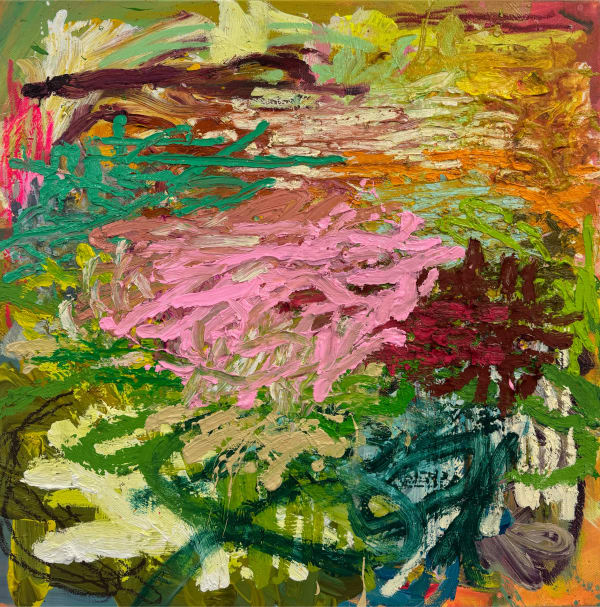
FOG Design + Art 2025
23 - 26 Jan 2025Jenkins Johnson is pleased to participate in FOG Design+Art 2025. Join us in Booth 107 for the Preview Gala on Wednesday January 22 . The...Read more -
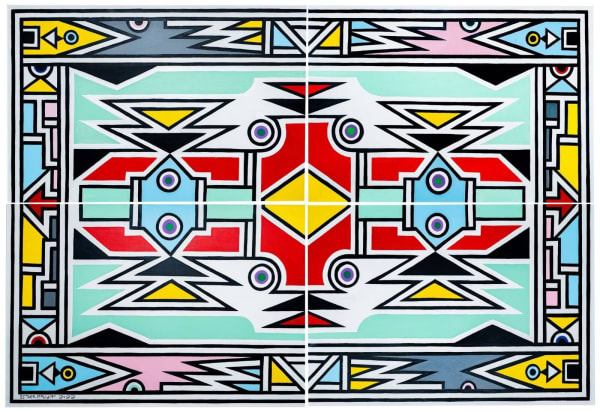
Art Basel Miami Beach 2024
6 - 8 Dec 2024Jenkins Johnson Gallery is pleased to participate in the 2024 edition of Art Basel Miami Beach . This year is our largest and most ambitious...Read more -
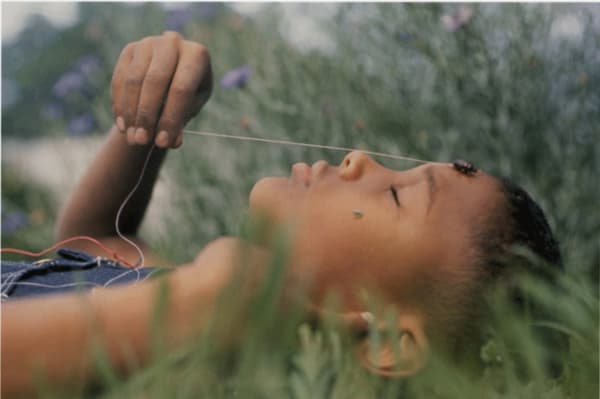
Art Basel 2024
Booth C12 10 - 16 Jun 2024Jenkins Johnson Gallery presents works by Patrick Alston, Mustafa Ali Clayton, Dewey Crumpler, Lisa Corinne Davis, David Driskell, Wadsworth Jarrell, Mary Lovelace O’Neal, Ming Smith,...Read more -

Art Basel | Miami Beach
Miami, FL 6 - 10 Dec 2023Jenkins Johnson Gallery will participate in Art Basel Miami Beach, December 8 - 10, 2023 Booth B31. We will feature artists that explore social and political issues of the African Diaspora by connecting past and current moments: Mary Lovelace O'Neal, Wadsworth Jarrell, Gordon Parks, Ming Smith, Patrick Alston, Adrian Burrell, Dewey Crumper, Lisa Corinne Davis, Violet Fields, Alex Jackson, Blessing Ngobeni, Gregory Rick, Enrico Riley, and Raelis Vasquez. Jenkins Johnson Gallery will be participating in the Kabinett sector with a solo presentation of works on paper by Mary Lovelace O'Neal, featuring her iconic Lampblack (1970's) and Desert Women (1990's) series. In the Lampblack drawings she layers black charcoal and pastel, allowing slivers of negative space to invade the surface. These drawings speak to her affair with an "uncluttered minimalist viewpoint", invoking both a cultural and aesthetic sentiment. In Desert Women series, Lovelace O'Neal portrays garments worn in the Sahara Desert in Egypt and the Atacama Desert in Chile. She studied with master printmaker James Lesene Wells and at The Robert Blackburn Printmaking Workshop. Lovelace O'Neal creates based on feeling and perception, forming moments of fleeting light. Her work is in museums including the Art Institute of Chicago, San Francisco Museum of Modern Art, Baltimore Museum, DeYoung Museum, and Brooklyn Museum. She has an upcoming solo exhibition at the San Francisco Museum of Modern Art in Spring 2024.Read more -

Art Basel
Basel, Switzerland 13 - 18 Jun 2023Jenkins Johnson Gallery is excited to announce its participation in the 2023 edition of Art Basel. Our booth will be located at C11, the fair...Read more -
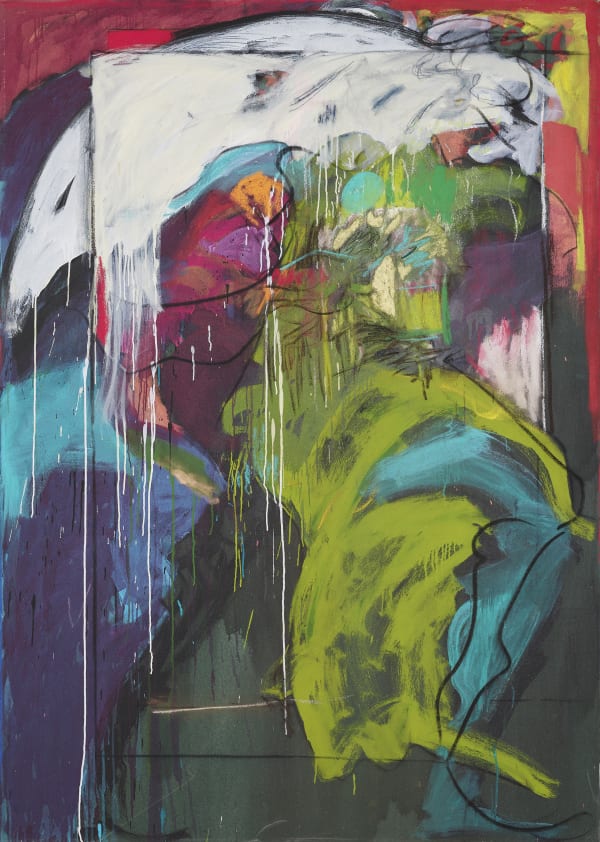
Frieze NY
New York, NY 17 - 21 May 2023Jenkins Johnson Gallery is excited to announce our participation in the 2023 edition of Frieze New York taking place at The Shed, Booth B19. Public...Read more



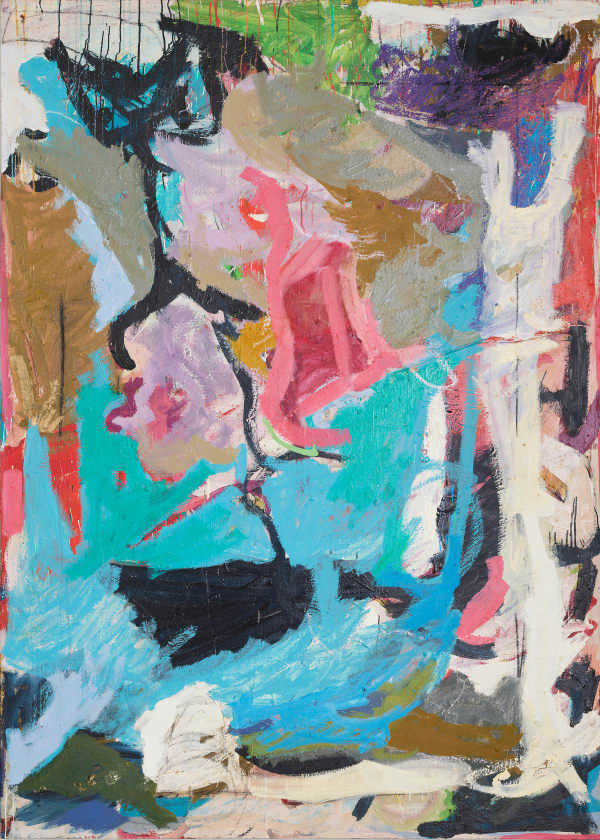
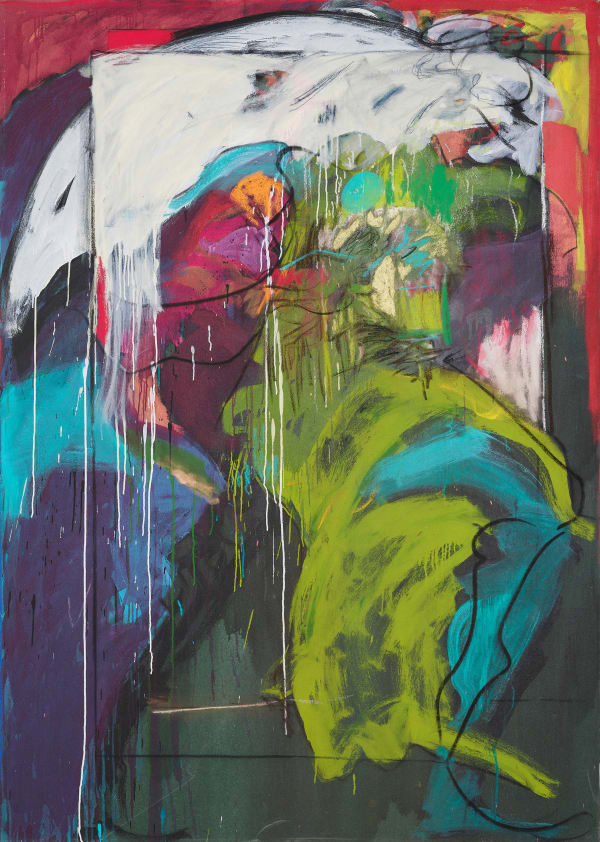
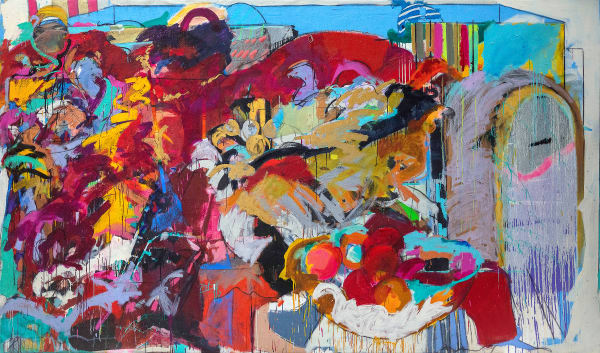
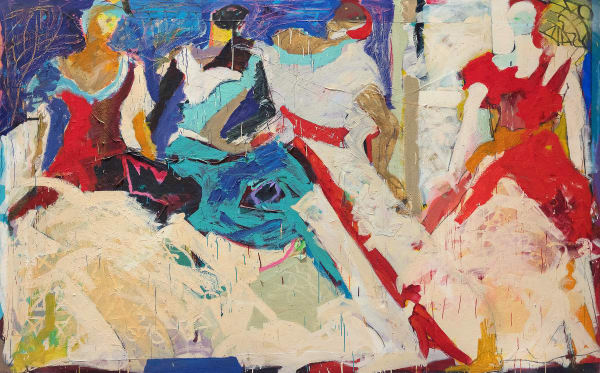
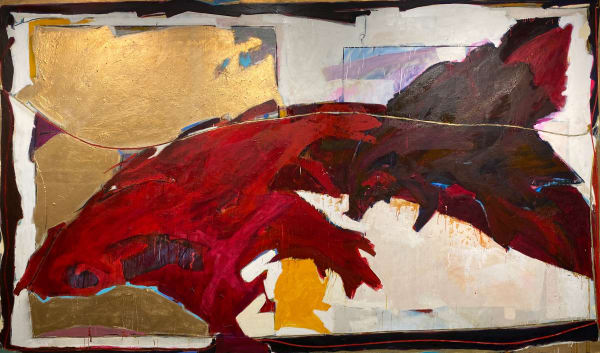

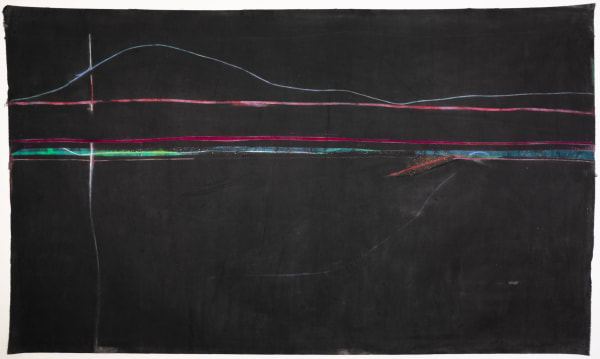

![Mary Lovelace O’Neal, Purple Rain de la série Two Deserts, Three Winters [Deux déserts, trois hivers], vers 1990 Technique mixte et peinture acrylique sur toile, 205,7 × 350,5 cm Courtesy of the artist and Karen Jenkins-Johnson Photo © Michael Covían](https://artlogic-res.cloudinary.com/w_600,c_limit,f_auto,fl_lossy,q_auto/ws-jenkinsjohnsongallery/usr/images/press/main_image/items/b2/b237d177111843d6a768e3ab0528bc83/screenshot-2025-04-12-at-2.31.46-pm.png)
![Mary Lovelace O’Neal, "Purple Rain" de la série "Two Deserts, Three Winters" [Deux déserts, trois hivers], vers 1990](https://artlogic-res.cloudinary.com/w_600,c_limit,f_auto,fl_lossy,q_auto/ws-jenkinsjohnsongallery/usr/images/press/main_image/items/2a/2a5d252c0f81414ea5904e52174bd39f/screenshot-2025-04-12-at-2.31.46-pm.png)
![Mary Lovelace O’Neal, Purple Rain de la série Two Deserts, Three Winters [Deux déserts, trois hivers], vers 1990 Technique mixte et peinture acrylique sur toile, 205,7 × 350,5 cm Courtesy of the artist and Karen Jenkins Johnson Photo © Michael Covían](https://artlogic-res.cloudinary.com/w_600,c_limit,f_auto,fl_lossy,q_auto/ws-jenkinsjohnsongallery/usr/images/press/main_image/items/f2/f23e1663943743ccb067de95fd2b00a2/screenshot-2025-04-12-at-2.29.31-pm.png)

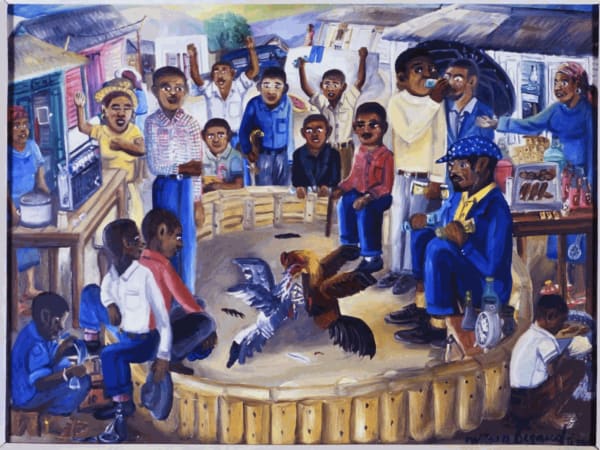
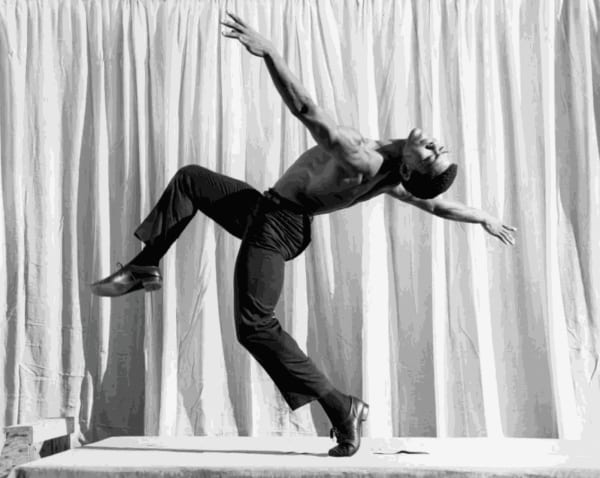
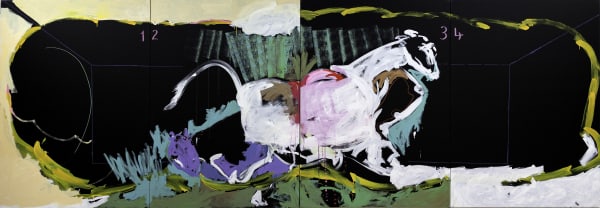


![Mary Lovelace O'Neal TID - Flowers and Still Life, Who Expected It, circa 1990s signed verso mixed ... [+]COURTESY JENKINS JOHNSON GALLERY; COPYRIGHT MARY LOVELACE O’NEAL. PHOTOGRAPHY CREDIT ROBERT DIVERS HERRICK](https://artlogic-res.cloudinary.com/w_600,c_limit,f_auto,fl_lossy,q_auto/ws-jenkinsjohnsongallery/usr/images/press/main_image/items/19/19044e2723ce4c0fbeba057f20cd216c/o-neal-tid-flowers-and-still-life-who-expected-it-circa-1990s-mixed-media-on-canvas-84-x-60-in-copy.jpg)


